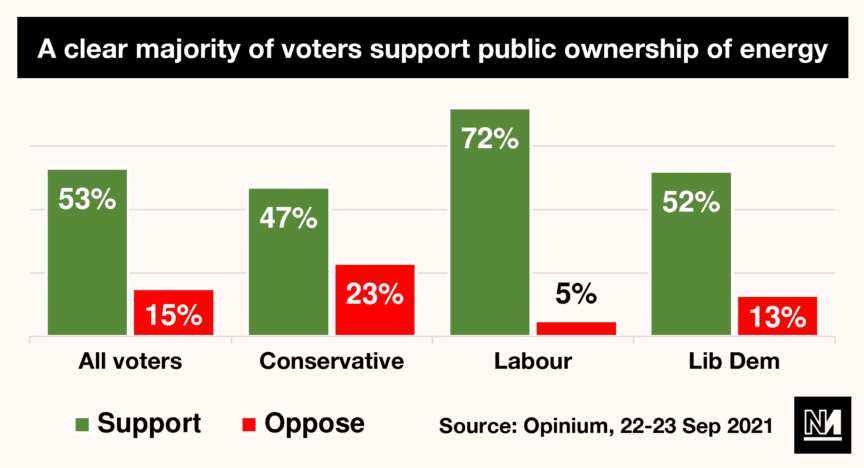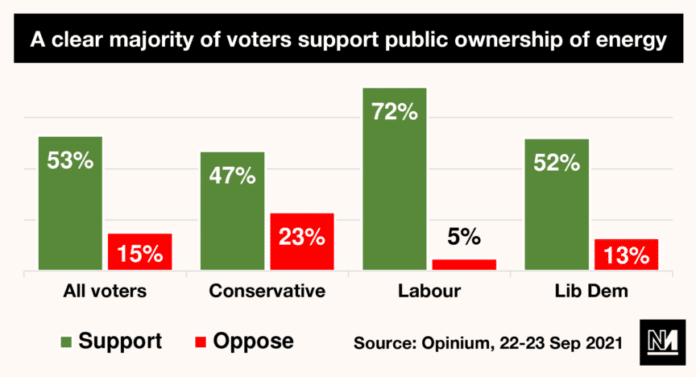The government claims that its new energy strategy will provide cleaner and more
affordable energy this decade. But we’ve been here before. Their 2011 White Paper,
Planning our Electric Future: A White Paper for secure, affordable and low carbon
electricity said ‘we need huge investment in renewables; a new generation of nuclear
stations; and, in time, gas and coal plant that can capture harmful emissions. This
will diversify supply and wean us away from imported fossil fuels.’ Within two years
they “cut the Green crap” crippling onshore wind, solar installations and home
insulation, while watering down sustainable building standards; thereby increasing
carbon emissions, losing jobs, and keeping bills high. So, here we are again.
Having learned little and forgotten much, today’s strategy states that it “will
accelerate the deployment of wind, new nuclear, solar and hydrogen, whilst
supporting the production of domestic oil and gas”; all at the same time. Just like
that!
Flagged up as a “press all the buttons at once” approach, the big red flashing button
that is almost totally absent is insulation. Insulate our building stock and we don’t
need to produce as much energy in the first place. Investment in insulation would
create around half a million jobs, none of which could be offshored, most of which
would be local and could revitalise communities up and down the country. Levelling
up agenda? What levelling up agenda? After failing twice with grants to homeowners
in the last ten years we are now left with the pathetic squib of a reduction in VAT on
insulation materials and solar panel installation until 2027. So, any small move in
the right direction will be taken only by the relatively few who can afford the initial
investment as individual consumers, and what work is done will be in penny packets
with no economies of scale. The £6.6 billion earmarked “to improve energy efficiency
and decarbonise heating over this parliament” is nowhere near enough to upgrade
the half a million homes the government has targeted, let alone the 19 million homes
that need it.
Central to the strategy is “a
significant acceleration of nuclear,
with an ambition of up to 24GW by
2050” (up to around 25% of projected
electricity demand). Whatever
the arguments about the green
credentials of nuclear*, there are
two immediate problems with this,
if the point is to reduce bills and
carbon emissions. One is speed.
The Small Modular Reactors that
are slated to be the core of this
drive are at prototype stage and
Rolls Royce don’t project actually
building any until the 2030s – so there is no immediate impact on supply.
The government admits that even this is “subject to technology readiness
from industry”. The same applies to the target of building one large reactor
a year, with no specific plans beyond Hinckley C and Sizewell C (with
a combined capacity of 6GW); so, this may well be in Garden Bridge,
Thames Estuary Airport territory. The second problem is cost. Nuclear is
very expensive. More expensive than gas. Much more expensive than
renewables already are. By the time they are built the cost differential will
be even greater. Is this greater cost going to be lumbered on to everyone’s
energy bills? Hardly a move towards “affordability” even in the long term.
The ambition of “up to” 50GW of Offshore wind by 2030 is up from the
previous 40GW target and the current 10.4GW capacity.– and includes “up
to” 5GW from floating offshore wind in deeper seas. Planning reforms will
cut the approval times for new offshore wind farms from 4 years to 1 year.
This is very welcome and is slated to produce an additional 30,000 jobs; so
half a cheer for that.
But, a licensing round for new North
Sea oil and gas projects to launch
in Autumn, with “bespoke support
to new developments” is a step in
the wrong direction. Exploring new
oil and gas fields that we need to
keep in the ground to have any
chance of staying under a 1.5C will
add to global supply, not provide a
like for like replacement for imports. The investment that goes into these
fields, from private companies or the government, could be better spent of
hastening the transition, not doubling down on the fuels that are causing
the problem. While, on current practice FOE estimates that new oil and
gas fields will take until 2050 to come on stream in any case, the FT has
argued that the companies engaging in these projects are smaller than
the energy majors and likely to get production started much quicker. This
is usually done by cutting corners, so that is an area our unions should be
looking at hard. This will do nothing to reduce energy bills right now. Even
the relative profitability of fossil fuel investment is declining sharply relative
to renewables; and is likely to be in negative territory before these fields
come on stream, even if that is achieved this decade. As the government
rightly notes – “Prices of renewables have been consistently decreasing,
with the price of offshore wind dramatically falling by around 65% since
2015, onshore wind prices down 50% since 2013, and residential roof top
solar panels are now less than 50% the price they were a decade ago”.
So, onshore wind is another massive missed opportunity. This is the
cheapest form of energy currently available, quick to erect and get going
and, as Ed Miliband pointed out, could have a positive impact on reducing
fuel bills in the next two years. There are around 600 sites currently
bogged down in planning procedures that were designed to block them
by the Conservatives in 2013. It takes a day to put one up. NIMBYish
opposition is mostly concentrated on the Conservative back benches, as
85% of people (and 85% of Conservative voters) are in favour of them and
have no objection to them being put up locally. “Consulting on developing
partnerships with a limited number of supportive communities who wish to
host new onshore wind infrastructure in return for guaranteed lower energy
bills” is a miserably small ambition and we should push for more in the
coming months. As energy bills rise even further, support for onshore wind
can only grow.
The decision to have a “geological survey” to keep the prospect of fracking
alive is another genuflection to the old gods that will only pay off if they fix
the science to suit Cuadrilla.
The Heat Pump Investment Accelerator Competition in 2022 worth up
to £30 million “to make British heat pumps”, is a diminutive bit of pump
priming if they want to install 600,000 a year by the end of the decade.
The UK’s current 14GW of solar capacity “could” grow up to 5 times by
2035 to a whopping 70GW. “Consulting” on the rules for solar projects
for domestic and commercial rooftops, however, is likely to follow the
same model as for insulation; giving incentives to those who can afford
the investment, not having a plan or an appropriate level of investment to
reduce fuel poverty and similarly unlikely to realise that fivefold increase.
An “ambition” for “up to” 10GW of hydrogen production capacity by 2030,
envisages “at least half coming from green hydrogen…utilising excess
offshore wind power” That means “up to” half will be produced using
methods that create more CO2 emissions than just using natural gas in the
first place.
There is no mention of support for Tidal Power, and a search of the Gov.
UK site turns up results no more recent than 2013.
We need a government that will invest massively and consistently in
onshore wind and home insulation, put a complete stop to fracking and
further North Sea oil and gas exploration, work on the potential of tidal,
and put a permanent windfall tax on the energy companies to keep bills
low and help pay for the investment in the meantime. The rise in energy
prices is already biting hard. Our campaigns need to focus the anger that
generates to genuine solutions.
Paul Atkin
And now Keir (elect me at any cost) Starmer:
We are all being lied to and cheated by rich powerful people who do not give a ****.
I’m with the IPCC and screw the walking dead:
And remember this: The Tories and Starmer’s Labour party are not working for us. If they were we would have publicly owned energy:

They are working for others.
Penny Lane
Award Winning Independent Citizen Media Needs Your Help. PLEASE SUPPORT US FOR JUST £2 A MONTH https://dorseteye.com/donate/







